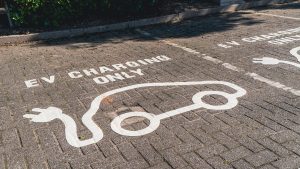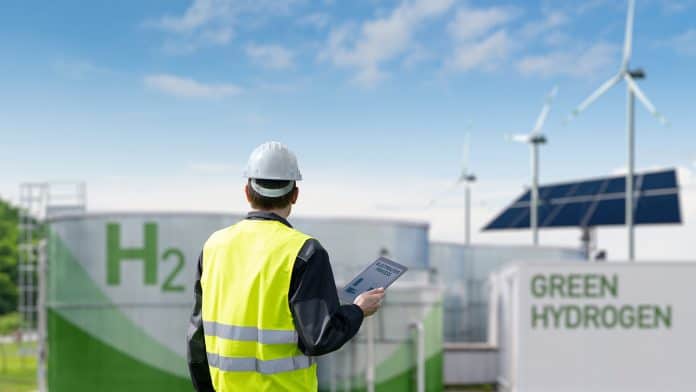In the United States, the development and expansion of electric vehicle ( EV ) infrastructure, which includes both on-road charging stations and off-highway electrification, is a hot topic. Major local disparities, with varying levels of availability across different parts of the country, have been used to characterize this issue.
Additionally, it is distinguished by specific difficulties that appear in both urban and rural settings as well as on- and off-road contexts. This landscape is even shaped by the role of government support and policy direction.
Understanding the complexities underlying the infrastructure that supports electric vehicles is becoming more and more important as interest in them continues to soar. When it comes to charging infrastructure, off-highway energy vehicles have their own particular set of requirements, which presents a number of design and manufacturing difficulties.
Due to its fast changing nature, it is difficult to foresee future trends in this field, but doing so is essential for planning and strategizing growth trajectories within this domain.
Infrastructure for EVs is accessible in the US
A substantial disparity is highlighted by the unequal distribution of electric vehicle charging stations across the United States, with coastal areas typically having more availability than their rural and Midwest counterparts.
This can be attributed to a number of factors, including geographical variations in population density and regular income levels, which directly affect infrastructure costs and EV technology adoption rates.
For instance, thickly populated urban areas, especially those near the coasts like San Francisco or New York City, typically have higher per capita incomes. These regions are more likely to support the infrastructure costs related to building charging stations and invest in pricey EV technology.
Due to fewer worries about charging time, the increased presence of these facilities immediately encourages more consumers in these areas to switch to electric vehicles.
Regions with lower ordinary income levels or population densities, like many Midwestern states and remote areas, are generally less equipped with EV charging infrastructure. This is the result of a number of factors, including lower consumer demand for EV technology due to financial constraints, longer travel distances that raise concerns about charging times, and higher per-unit infrastructure costs brought on by the need for more substantial grid improvements in less established areas.
As a result, these difficulties drastically contribute to regional disparities in the availability of EV charging stations across America, despite growing regional interest in reducing carbon emissions by switching to electric vehicles.
Therefore, it is essential that potential initiatives to expand this essential area of alternative transportation infrastructure take these unique geographical traits and challenges into account.
The difficulties in growing the infrastructure for EV charging
When examining the increase in energy vehicle use, substantial obstacles emerge, particularly in relation to potential power supply issues, prohibitive charging station price points, and a lack of policies advancing progress. These problems include:
cost of infrastructure
Both the public and private sectors must invest a sizable amount of money in order to build an extensive network of charging stations. The latter’s involvement is crucial because government funding single might not be enough.
modern restrictions
Rapid mass-charging capabilities are constrained by existing technology, which may cause power grid stress during high demand times. Due to this restriction, more money must be spent on grid reinforcements and technology development.
the general public
Despite growing interest in electric vehicles, some possible users are unaware of their advantages or how to make the most of the country’s EV infrastructure.
concerns about sustainability
Although electric vehicles drastically reduce greenhouse gas emissions compared to traditional fuel vehicles, battery manufacturing processes play a significant role in the production process’s negative climate effects.

the accessibility of EV infrastructure in cities and rural areas
A complex challenge in promoting wider adoption of this responsible mode of transportation arises from variations in the accessibility and use of EV charging stations between rural and urban areas. Rural EV adoption encounters challenges like a lack of public charging infrastructure brought on by higher travel distances and lower population density.
Financial factors also contribute to these disparities; the high cost of installing and maintaining charging stations may never be justified by the prospective low usage in rural areas. Due to this circumstance, EV accessibility is greatly skewed toward metropolitan areas with higher demand.
On the other hand, building EV infrastructure in cities presents challenges for industrial planning. Space limitations apply when installing new charging stations due to the densely occupied nature of urban environments. The availability of funding even becomes a crucial factor; enough funding for EV infrastructure is required for the construction and operation of sufficient charging facilities to meet rising demand.
Also, there are differences between these two types of geographies that affect the environment in addition to human mobility.
In thickly populated cities, increased use of electric vehicles can substantially reduce greenhouse gas emissions, but in rural areas, achieving similar results can be much more challenging due to their particular characteristics.
government assistance
In light of these difficulties, it is important to draw attention to the efforts made by British government organizations to increase the number and accessibility of electric vehicle charging facilities. The US government has supported this development using a variety of strategies:
Federal subsidies
Over the past few years, a number of incentives have been put in place at the national level to promote EV adoption. For instance, the$ 2 billion in grants from the Electric Drive Vehicle Battery and Component Manufacturing Initiative were used to produce cutting-edge batteries and electric drive components.
secret collaborations
The US government encourages exclusive partnerships in addition to direct funding in an effort to improve the infrastructure for electric vehicles. One such initiative is the” EV Everywhere Grand Challenge,” which the Department of Energy ( DOE ) started in order to increase the number of high-speed charging stations available across the nation. It collaborates with national laboratories, universities, private businesses, and other governmental organizations.
financing for infrastructure
Through financing initiatives like the Clean Cities Alternative Fuel Vehicle Deployment Initiatives, which allocated millions of dollars to the construction of EV charging stations across the country, efforts are also being made to inject money into open charging infrastructure.
scientific developments and their effects on the environment
Political policies are expanding real infrastructure while also investing in research and development for technological advancements that could further reduce emissions while enhancing EV range and battery life because environmental impact is a major factor in the transition to electric vehicles.
constructing an off-road EV charging infrastructure
The creation of charging stations for electric vehicles intended for non-highway use presents a special and challenging challenge that calls for creative solutions and tactics. Off-highway adaptations necessitate the incorporation of infrastructure financing to support their construction and maintenance in addition to the installation of charging stations in isolated or less accessible areas.
The development of energy-efficient charging systems that can withstand challenging economic conditions while offering dependable service has been made possible by technological advancements that have been crucial in addressing these challenges. These developments include everything from solar-powered charging stations to smart grid technologies that reduce electricity use when it’s not in use.
For the transportation industry to promote responsible solutions, investment in this kind of infrastructure is essential, especially in sectors like mining, agriculture, and construction where off-road vehicles are common. The combination of alternative energy sources and charging infrastructure has two advantages: it lowers greenhouse gas emissions from conventional fossil fuel-based power generation and broadens the application of EV technology outside of urban areas.
Additionally, public-private partnerships may provide opportunities for obtaining needed funding without putting undue financial strain on regional communities or private companies.
Therefore, creating an effective and adaptable off-road EV charging network necessitates a comprehensive strategy that takes into account modern innovation, targeted investment strategies, and sustainability factors.

The design and production of energy off-highway vehicles presents special difficulties, with research showing that one of them is making sure these vehicles can withstand the rigors of heavy-duty applications, a problem that 60 % of manufacturers have reported. Since off-road vehicles frequently operate in serious conditions that could quickly reduce battery life, battery longevity is a crucial concern in this regard.
Terrain adaptability is another difficulty. Without sacrificing performance or energy efficiency, electric vehicles must be built to handle a variety of terrain, from rough terrain to gravel dunes.
The need for light but incredibly resilient materials for construction presents yet another challenge in material sourcing. This brings us to durability issues, which are crucial because off-highway electric vehicles ( EVs ) must withstand more demanding operational conditions in order to be more durable and long-lasting.
Last but not least, cost efficiency continues to be a barrier as some manufacturers struggle to create high-performance, but cheap electric off-highway vehicles because of the high costs associated with batteries and other crucial parts.
The future of EV infrastructure, both on- and off-road
It is crucial to imagine what the future holds for EV infrastructure as we move away from the difficulties of designing and producing energy off-highway vehicles. This applies to both on- and off-road contexts because each has its own special set of factors to take into account when it comes to infrastructure financing, renewable energy integration, vehicle-to-grid technology, and battery disposal techniques.
A number of factors will probably have an impact on the future landscape of EV infrastructure. The speed at which this change takes place may be significantly influenced by the availability of infrastructure funding, which includes the provision of enough money to build a vast network of charging stations to support higher EV adoption rates. There will be a rise in demand for dependable and easily visible charging facilities as more people choose electric vehicles.
Investment in this area is so essential for supporting existing users as well as encouraging further uptake.
The simultaneous integration of alternative energy sources into these infrastructures is an important factor. The economic impact can be further reduced while maximizing energy usage nevertheless by utilizing power from renewable sources like solar or wind energy.
Additionally, vehicle-to-grid technology offers another tempting option where electric vehicles can not only draw power but also feed excess back into the grid during high demand times, serving as portable energy storage units. This could completely alter how electricity grids function while giving EV owners more money to make money.
Finally, there are factors to take into account when disposing of batteries. Increased volumes of used batteries are brought on by the increasing number of electric vehicles on and off the road, necessitating efficient recycling or disposal techniques to reduce environmental harm and probable resource losses.
Therefore, these factors taken together point to a complex future in which technical advancements must coexist with strategic thinking and ethical behavior.
The solutions put forth by the US government provide hope.
In conclusion, both on and off the road, the path to an electric future resembles a large, unexplored road. Progress is being made despite difficulties like local variations in charging station availability, obstacles to infrastructure expansion, and manufacturing difficulties for off-highway vehicles.
Along with creative solutions, the US Government’s assistance provides hope that these challenges can be overcome. One cannot help but feel a sense of anticipation for what lies ahead as this new era of transportation begins—a highway lit up by the promise of green mobility.










